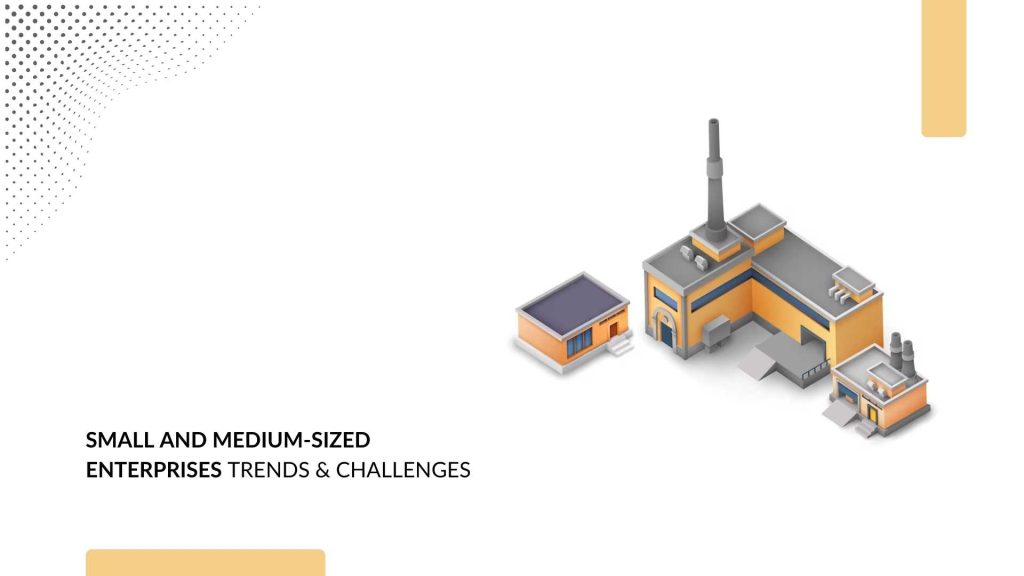SMEs are businesses that maintain revenues and assets below a certain threshold. While definitions vary by country, SMEs typically have fewer than 250 employees. These businesses play a crucial role in economies worldwide, contributing to job creation, innovation, and economic growth. Here’s a breakdown of some key aspects of SMEs, along with common challenges and emerging trends:
Understanding SMEs:
Size Criteria: SMEs are characterized by their relatively small size compared to larger corporations. The very purpose of an SME can vary by industry but typically includes factors such as revenue, number of employees, or assets.
Contribution to the Economy: SMEs are significant contributors to economic development. They often drive innovation, foster entrepreneurship, and provide employment opportunities, particularly in local communities.
Flexibility and Adaptability: SMEs are known for their agility in responding quickly to market changes. This flexibility allows them to innovate, customize products or services, and explore niche markets more easily than larger corporations.
Access to Finance: SMEs often need help accessing financing compared to bigger businesses. They may encounter difficulties securing loans from traditional financial institutions due to limited collateral, shorter credit history, or perceived higher risk.
Challenges Facing SMEs:
Access to Capital: Securing funding for business operations, expansion, or innovation investment can be challenging for SMEs, particularly due to limited access to traditional financing options.
Market Competition: SMEs often operate in highly competitive markets dominated by larger companies with greater resources. Competing with these established players can pose significant challenges for smaller businesses.
Regulatory Compliance: SMEs may need help navigating complex regulatory environments, which vary by industry and jurisdiction. Compliance with legal requirements related to taxes, labor laws, and industry standards can be particularly burdensome for smaller businesses with limited resources.
Talent Acquisition and Retention: Recruiting and retaining skilled employees can be a major challenge for SMEs, especially in industries with a high demand for specialized talent. More than limited budgets for salaries and benefits can make it hard to attract and retain top talent.
Trends Impacting SMEs:
Digital Transformation:
SMEs increasingly embrace digital technologies to streamline operations, reach new customers, and improve efficiency. Trends like e-commerce, cloud computing, and data analytics are transforming SMEs’ business.
Remote Work and Flexibility:
The COVID-19 pandemic accelerated the adoption of remote work arrangements, which have become more common among SMEs. Flexible work arrangements help SMEs attract talent, reduce overhead costs, and enhance employee satisfaction.
Sustainability:
Customers are placing growing importance on sustainability and ethical business practices. SMEs are incorporating sustainable initiatives into their operations, such as minimizing waste and supporting residents to meet customer expectations and differentiate their brands.
Globalization and Market Expansion:
Tech advancements in consumer behavior have facilitated market expansion opportunities for SMEs beyond their local borders. E-commerce platforms, digital marketing strategies, and international trade agreements enable SMEs to access global markets more easily than ever.
Conclusion:
Acumatica Cloud ERP offers a complete solution tailored to SMEs’ specific needs. It addresses key challenges and leverages emerging trends to enhance its operations. With financial management, CRM, project accounting, and inventory management features, Acumatica streamlines business processes and improves productivity.
Its cloud-based architecture facilitates remote access and scalability, empowering SMEs to adapt to changing market conditions and drive growth efficiently. By embracing Acumatica ERP, SMEs can unlock opportunities for innovation, cost savings, and competitive advantage in today’s dynamic business landscape.
Related Content: Five challenges that face ERP implementation in SME

Vijay comes with a vast experience in ERP and enterprise solutions space with about 20 years of experience in various packaged application like Acumatica, SAP, Orion, Salesforce.com, SugarCRM and, SalesLogix.

